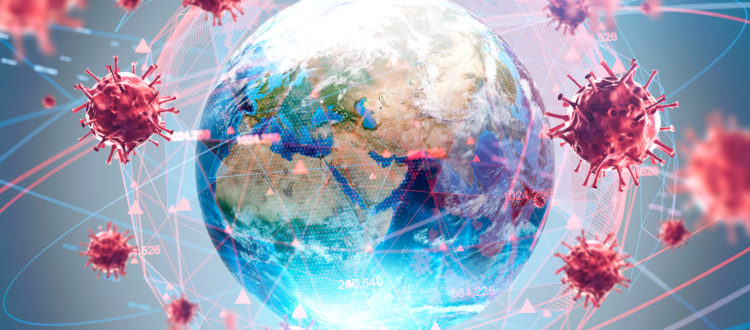Globalization, Population Growth and COVID-19
Published on March 30th, 2020
By now, the coronavirus global pandemic has reached virtually every corner of the planet. As countries struggle to stop the spread of the deadly virus, decades of worldwide population growth and globalization have created many challenges to containing COVID-19.
It will be years, of course, before we can fully measure the health and economic impact COVID-19 had on our population. But we are witnessing the difficulties of overcoming the virus in a world far different than previous pandemics of this scale.
Globalization and Travel
The merits of a globalized world aside, decades of free trade policies, commerce, and expanding travel networks have created an interconnected web of multinational companies, free trade zones, and shipping routes. Goods, services, and people move around the globe at a pace unimaginable 100 years ago.
Viruses and deadly pathogens can move faster and farther than ever before. In a 2013 article, Scientific American explained it this way:
Today, travelers are just a few hours’ flight away from places that would have taken months to travel to by ground or sea in the past. This is a boon not just to humans, but to the microbes they carry. Sick travelers can introduce pathogens to new people as they travel, and at their destination, before they even realize they are sick.
Population Growth
There were approximately 1.8 billion people on the planet in 1918 when an H1N1 virus, nicknamed the “Spanish Flu,” swept the globe and killed 50,000,000 people worldwide. One hundred years later and the global population has quadrupled to 8 billion, which means a virus could pose a significantly higher potential loss of human life. Additionally, cities and urban areas are larger and denser than ever before and evidence suggests there is a strong correlation between the risk of pandemic and population density.
The Scientific American piece cited research explaining how population density may actually increase the rate of pandemic.
We’ve done the math and we’ve proved it,” said Dr. Peter Daszak, a disease ecologist and the president of Eco Health Alliance, who examined the link in a 2008 study published in the journal Nature.
Looking at contemporary outbreaks since the mid-20th century, Daszak and colleagues found that the rate of emergent diseases caused by pathogens new to humans has increased significantly with time, even when controlling for progress in diagnosis techniques and surveillance, which could make it only seem like diseases were on the rise. More than 300 new infectious diseases emerged between 1940 and 2004, the study found.
It’s important to recognize that our changing and evolving world is now better equipped at handling a global pandemic than any time in our history. Advances in medicine and technology allow for far better treatment, monitoring, and containment of viruses like COVID-19. But as this virus wreaks havoc on the world, we should be examining what globalization and a projected global population of over 11 billion by 2100 will mean for future worldwide pandemics.





